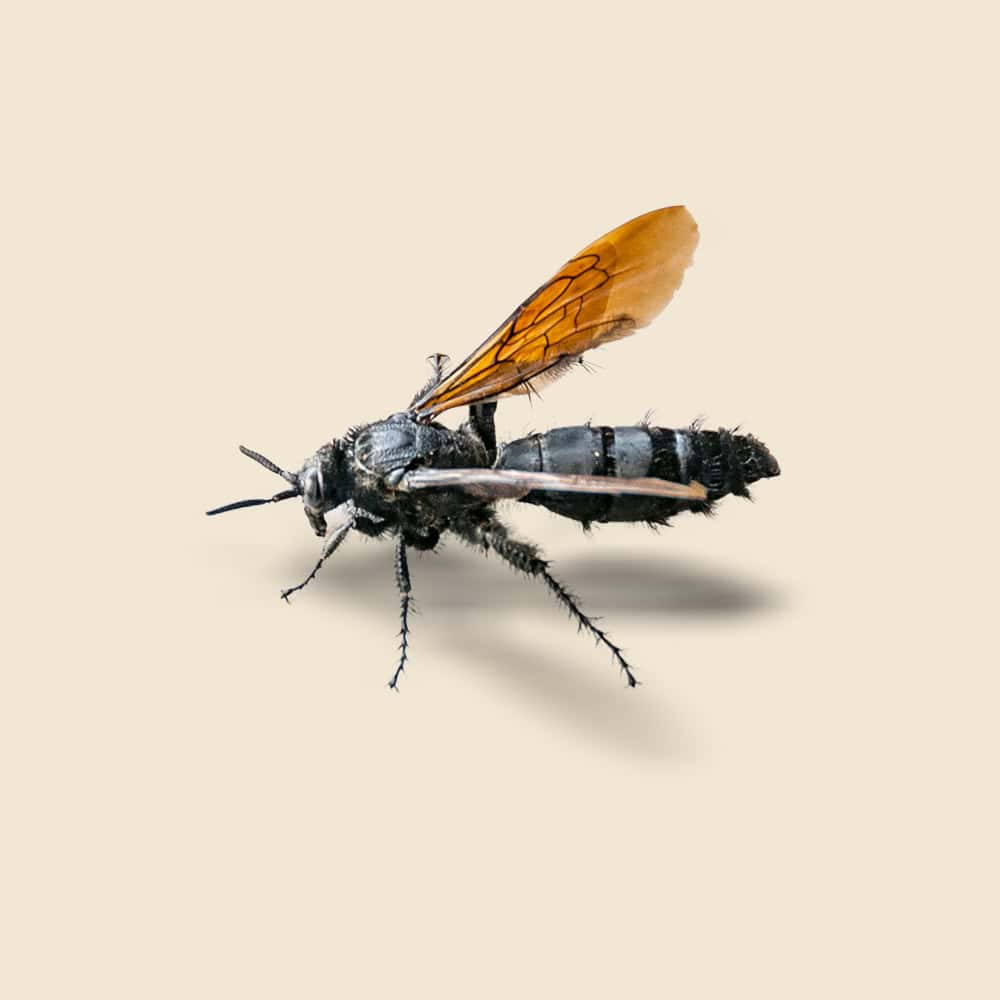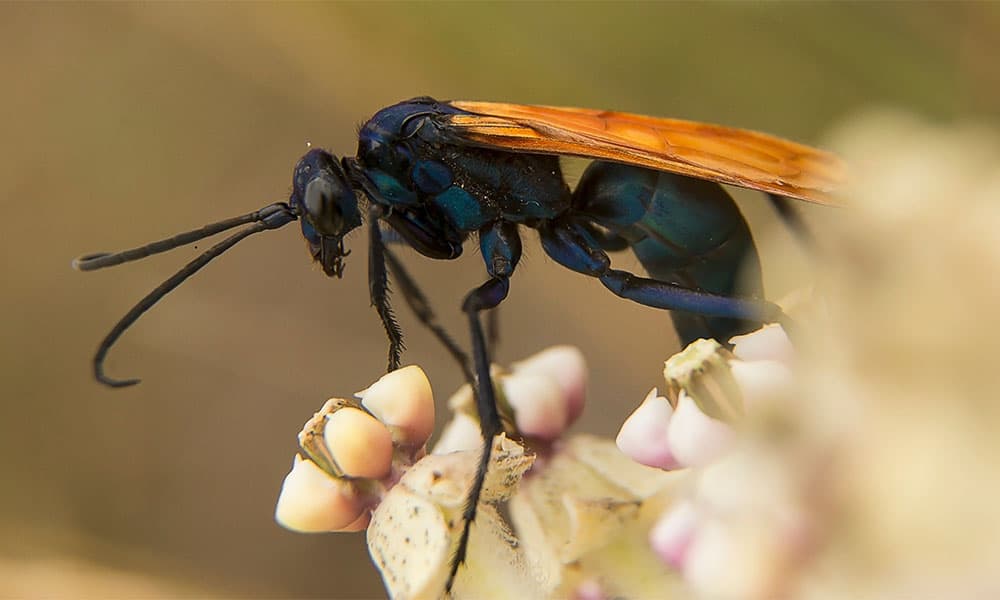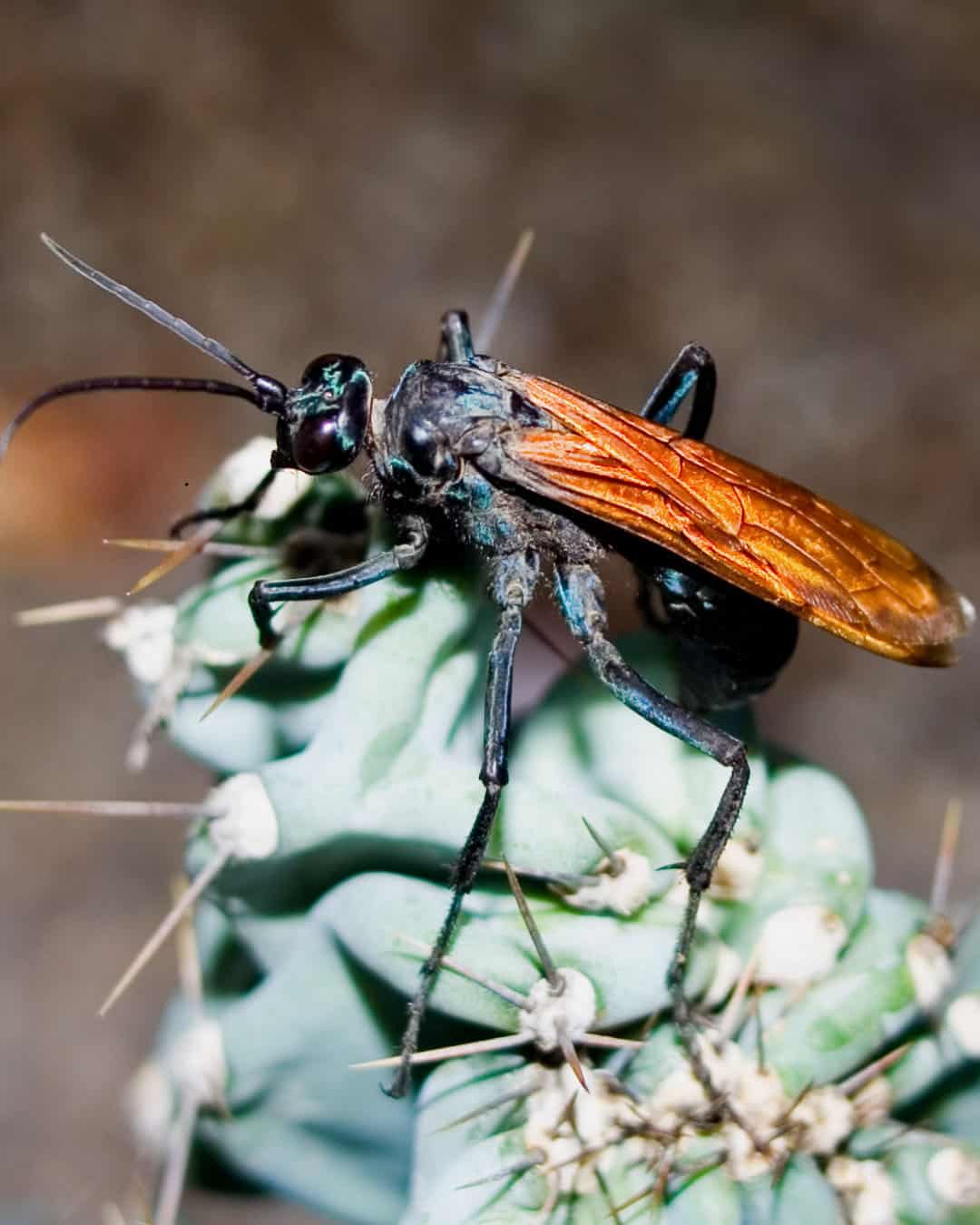Tarantula Hawk Wasp Facts & Information
Tarantula hawk wasps are striking, large wasps known for their vibrant coloration and unique hunting behavior. Renowned for their potent sting, these wasps play a vital role in controlling tarantula populations, laying their eggs inside these spiders to provide nourishment for their larvae. While they are fascinating creatures, their presence can be concerning due to the intensity of their sting and their aggressive nature when defending their nests.

Pepsis
What You Need To Know About Tarantula Hawk Wasps
What do tarantula hawk wasps look like?
Tarantula hawk wasps are large, striking insects, typically measuring between 1 to 2 inches in length. They have a robust body, often featuring vibrant blue-black or metallic blue coloration with bright orange or reddish wings. Their long legs and impressive size make them easily recognizable among other wasps.
What do tarantula hawk wasps eat?
Tarantula hawk wasps primarily feed on nectar from flowers, using their long proboscis to reach deep into blooms. However, their most notable behavior involves hunting tarantulas; females capture these spiders and use them as live food for their larvae, paralyzing the tarantula with their venom before laying an egg on it.
What sort of habitat do tarantula hawk wasps live in?
Tarantula hawk wasps prefer dry, sandy environments, often found in deserts, scrublands, and open fields. They construct their nests in burrows, which they dig into the ground or use pre-existing spider burrows, providing shelter for their developing young.
How do tarantula hawk wasps commonly behave?
These wasps are solitary creatures, with females responsible for nesting and hunting. While they are generally non-aggressive towards humans, they can be defensive if their nests are threatened. When hunting, the female exhibits remarkable precision and strength, overpowering her spider prey before dragging it back to her nest.
Did you know this about tarantula hawk wasps?
Tarantula hawk wasps are known for their incredibly painful sting, often ranked among the most painful insect stings in the world on the Schmidt Pain Index. Despite the intensity of their sting, they are not aggressive and typically only sting when provoked. Interestingly, their unique life cycle, which involves paralyzing tarantulas for larval sustenance, showcases a fascinating example of predator-prey dynamics in nature.
Understanding Tarantula Hawk Wasp Infestations
Understanding tarantula hawk wasp infestations is essential for effective management. These wasps are characterized by their iridescent blue or black bodies with orange or reddish wings. They typically hunt alone and are often found in sandy or open areas, where they search for tarantulas. When they locate a spider, they deliver a paralyzing sting that immobilizes the tarantula, allowing the wasp to lay its eggs inside. Although they are solitary hunters, their nests can attract multiple individuals during the mating season.

How Hearts Handles Tarantula Hawk Wasp Treatment
Hearts Pest Management employs an integrated pest management approach to handle Tarantula Hawk Wasp infestations.
Tarantula Hawk Wasp Inspection
Tarantula Hawk Wasp Treatment
Tarantula Hawk Wasp Prevention
Educational Resources

Think You Might Have a Tarantula Hawk Wasp Infestation?
At Hearts Pest Control, we understand the challenges associated with Tarantula Hawk Wasp infestations and are here to provide professional solutions tailored to your needs. Flourishing in warm and humid climates, they are prevalent in many regions, including San Diego County, Orange County, and Los Angeles County.